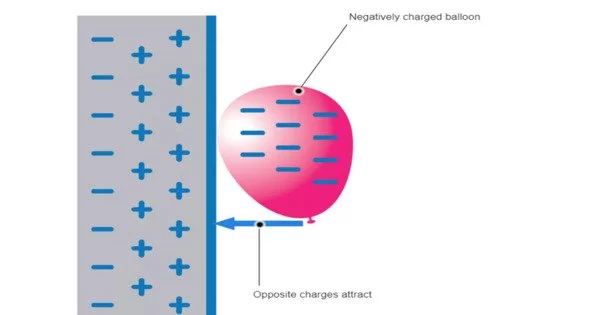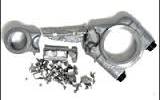Static electricity is a charge imbalance within or on the surface of a material or between materials. The charge remains until it can be removed by an electric current or electrical discharge. Static electricity is distinguished from current electricity by the fact that the electric charge flows through an electrical conductor or space and transmits energy.
The imbalance of negative and positive charges in an object causes static electricity. These charges can accumulate on the surface of an object until they are released or discharged. A circuit is one way to discharge them.
When two surfaces come into contact and wear and separate, a static electric charge can form, and at least one of the surfaces has a high resistance to electric current (and is thus an electrical insulator).
The transfer of electrons from one object to another causes static electricity. Electrons can move from one object to the other when two objects come into contact or rub against each other, resulting in one object becoming positively charged (losing electrons) and the other becoming negatively charged (gaining electrons). Static electricity is caused by the accumulation of these charges.
Some common examples of static electricity include:
- Electric shocks: After walking on a carpet or rubbing against certain materials, you may experience a sudden discharge of static electricity, resulting in a mild electric shock if you touch a doorknob, another person, or any conductive object.
- Clothing clinging: Certain fabrics, such as wool or synthetic materials, can cause friction against your skin or other surfaces, causing electrons to transfer and accumulating static charge. As a result, your clothes may stick to your body or to each other.
- Lightning: Lightning is an extreme form of static electricity that occurs in thunderstorms. It is caused by charge accumulation between clouds or between clouds and the ground. This accumulated charge is discharged, resulting in a powerful electrical discharge in the form of lightning.
- Sparking and fireworks: When you touch a metal object, like a doorknob or car door, after walking on a carpet or rubbing against certain materials, you may observe a visible spark. Similarly, fireworks rely on the rapid discharge of static electricity to create their dazzling displays.
- Dust attraction: Static electricity can cause dust particles and other small lightweight objects to stick to surfaces. This effect is often noticeable on TV screens, computer monitors, and other electronics.
Most people are familiar with the effects of static electricity because they can feel, hear, and even see the spark as the excess charge is neutralized when it is brought close to a large electrical conductor (for example, a path to ground) or a region with an excess charge of the opposite polarity (positive or negative). A static shock, or more specifically, an electrostatic discharge, is caused by the neutralization of a charge.
Static electricity can be controlled or reduced using a variety of methods, including grounding and the use of antistatic materials. Tools and techniques used to manage static charge build-up and prevent unwanted effects include antistatic sprays, wristbands, and conductive flooring.
















